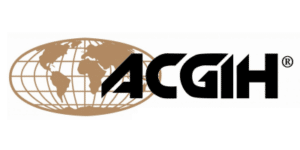
If you’ve had an emergency due to rainfall, slow leak or other water intrusion event for a building under construction, Omega offers a comprehensive suite of moisture monitoring services for property developers and construction companies.
Guided by one of our Certified Industrial Hygienists (CIH), we will assess and remediate water staining, water damage, elevated moisture, and suspect mold growth (SMG) on ceilings, walls, floors, and other building materials.
Moisture & Mold Assessment
Under the direction of an Omega CIH, one of our industrial hygienists (IH) will evaluate your current situation, review historical information, and conduct at least one site visit to visually assess the water damaged building materials on site, from the basement to the top floor.
This site inspection consists of a visual surface screening for the following:
- Visible excess moisture
- Water staining
- Suspect mold growth
- Discoloration
- Texture changes
- Material dimensional changes
- Decay
- Structural dislocations
Use of Infrared Thermography
Because the absence of visible deficiencies does not exclude the presence of excess moisture within the building envelope or on a surface, our non-invasive assessment will include infrared (IR) thermography.
IR identifies retained moisture in the impacted wall systems by visualizing temperature differentials on the building substrate. Temperature distribution on a surface causes the underlying geometry of the substructures to stand out, indicating potential water damage.
In addition, the sensitivity of the IR camera causes water-saturated or questionable materials to stand out (i.e. missing insulation, thermal bridges, and air leakage).
The camera provides a non-destructive method for identifying probable damaged areas and focusing investigations on the building envelope and latent water leaks that could lead to microbial growth. The IR camera also permits the option of obtaining colorized images in printable formats.
Moisture Meter Testing
We also use a digital moisture meter analysis as confirmation to determine whether regions of drywall or other building materials identified with thermal differentials using the IR technology are in fact associated with elevated moisture content.
Optional Sample Collection and Laboratory Analysis
During the assessment, Omega can collect air, surface, or bulk samples for analysis of mold, dust, or other contaminants. These samples will be submitted to an American Industrial Hygiene Association accredited laboratory for analysis based on your turn-around time requirements. The results of this analysis are used to confirm presence of mold in collected samples. Additionally, laboratory testing of post-remediation air samples can be used to confirm success of mold abatement.
Report Development
Based on our findings that are reviewed by our CIH, we will provide you with a written report that includes a project summary, methodologies, conclusions and recommendations.
We also provide our recommendations to your appointed remediation contractor to address the dry down and remediation of the water impacted building materials and any other abatement activities. Examples of moisture remediation include:
- Removal, cleaning, disinfection and/or replacement of water damaged building material and finishes
- Installation of biocides and to conduct dry-down activities utilizing a combination of passive methods (cut-outs and ambient air) and targeted methods with de-humidifiers and air movers
All remediation work needs to be performed in accordance with the following applicable, accepted industry guidelines:
- Mold Remediation in Schools and Commercial Buildings, US Environmental Protection Agency
- Guidelines on Assessment and Remediation of Fungi in Indoor Environments, New York City Department of Health & Mental Hygiene
- Institute of Inspection, Cleaning, and Restoration Certification (IICRC) S520 standard)
If you do not have a remediation contractor, we can discuss our remediation services.
If necessary, alternatives and options for additional investigation and testing may be recommended if an effective solution cannot be found during the initial assessment and baseline testing.
Additional Construction Moisture Monitoring Services
- Moisture mapping
- Periodic moisture assessment of concrete
- Responding to potential mold growth on construction materials
- Testing fire sprinklers, plumbing, and roof systems for leaks
- External precipitation effects
- Vapor intrusion analysis on existing concrete to determine type of new floor coverings needed
- Subfloor concrete installation moisture management
Contact us to learn more about construction moisture monitoring






